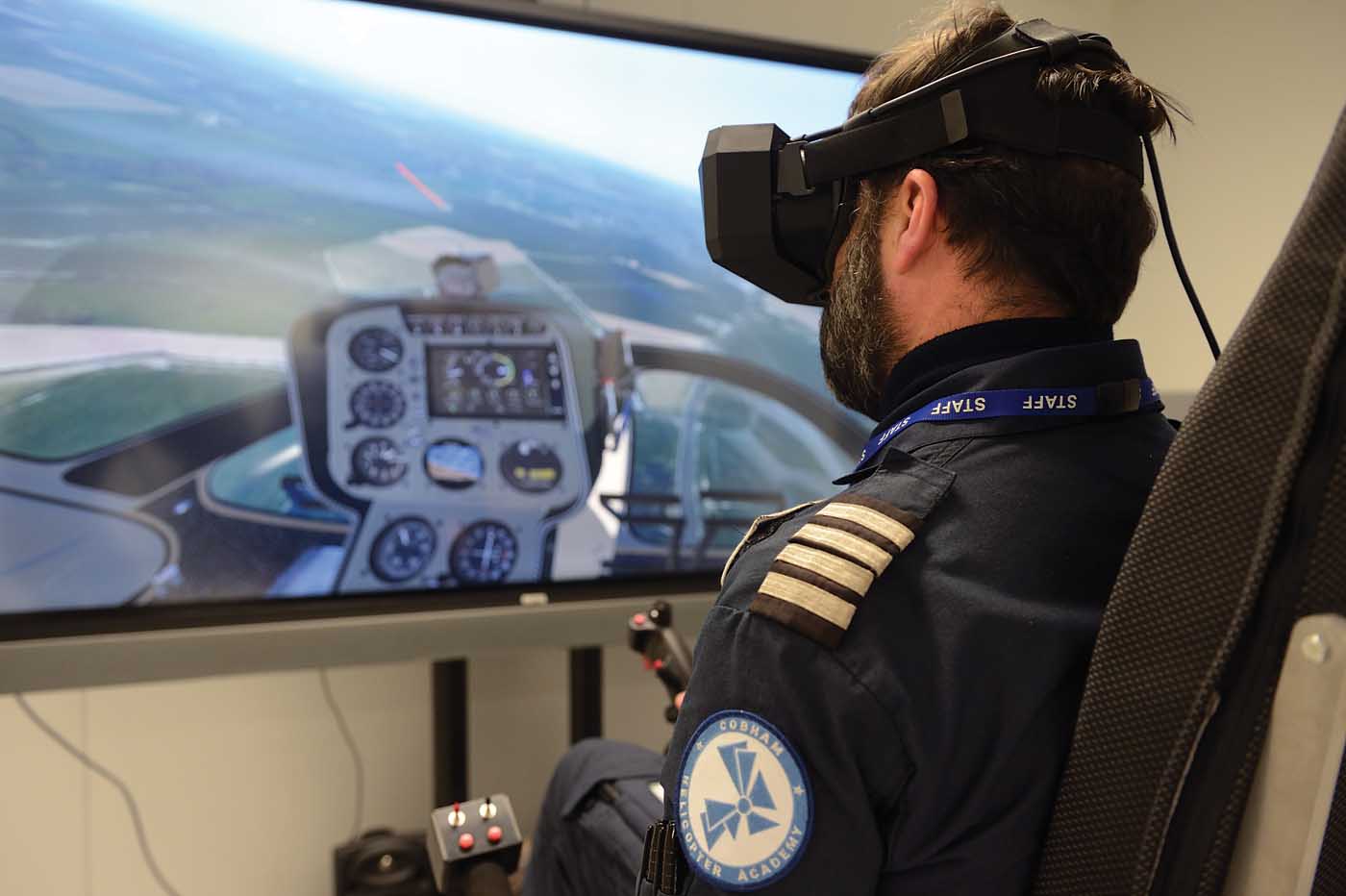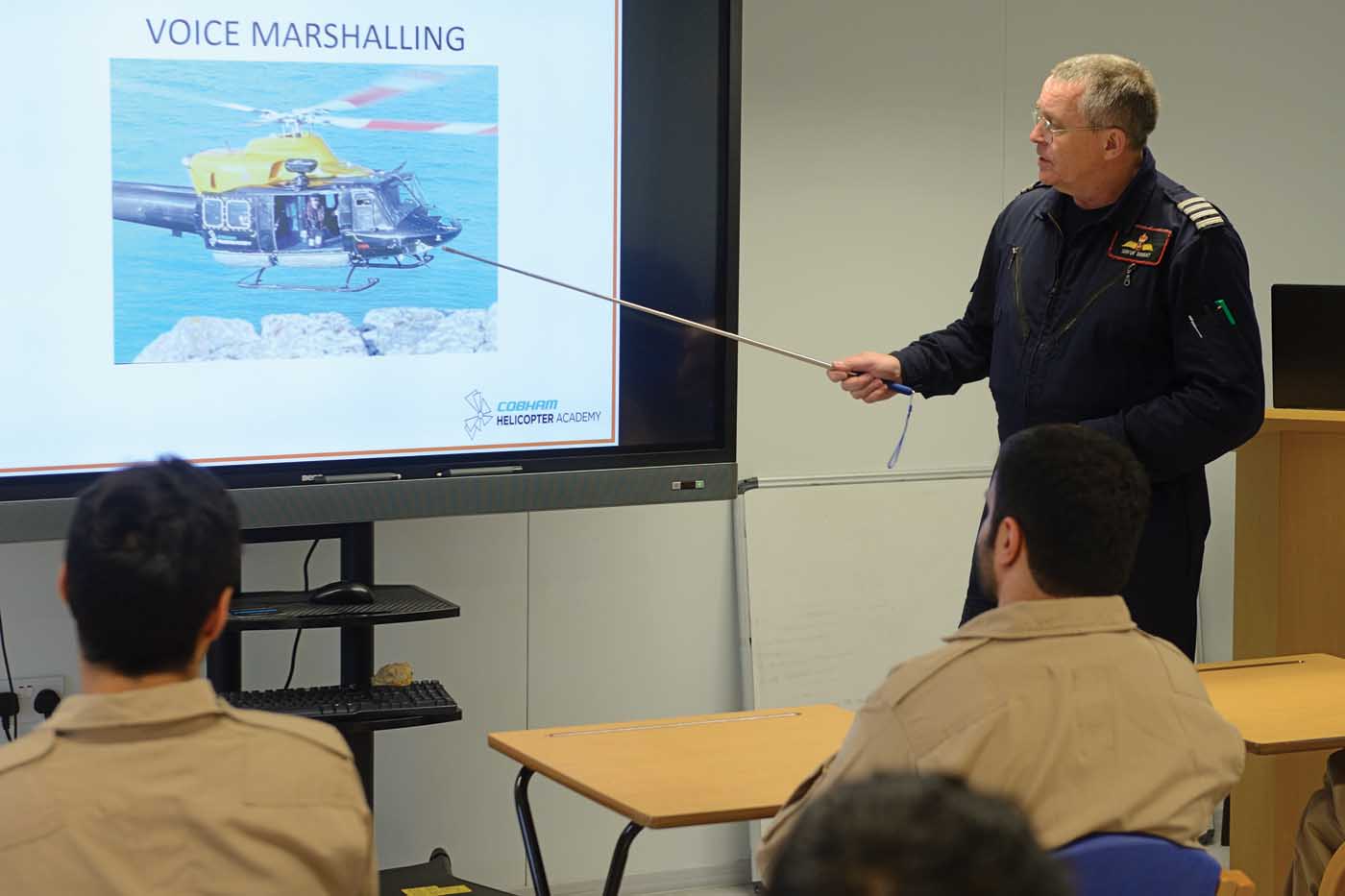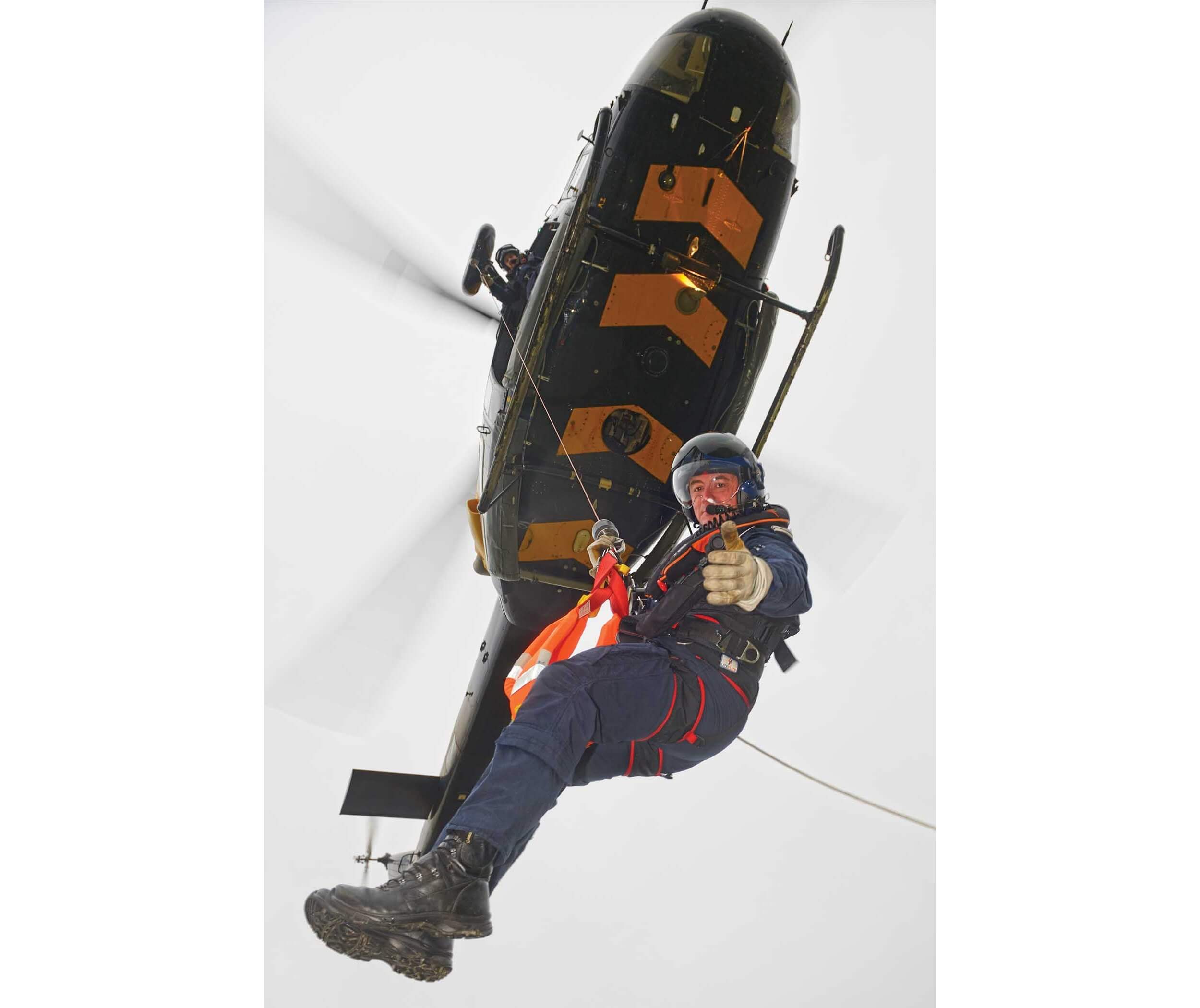Fringed with some of the most beautiful beaches in the U.K., close to the Southwest Approaches, and deep in the heart of holidaymaker country, Cornwall is an area synonymous with search-and-rescue (SAR) helicopter operations. It’s therefore highly appropriate that Cobham Helicopter Academy (CHA) has been established there in the very buildings that previously housed the Royal Air Force (RAF) SAR operations of No 203 Squadron at what was once known as RAF St Mawgan. Nestling on the county’s Atlantic coast, this airport has embraced a whole new era of aviation in the West Country and is now known as Cornwall Newquay Airport.

Today, the nearby town of Newquay is famous for its surfing and summer appeal, but if CHA continues its current trend, helicopter training will be a new feather in the cap for this idyllic corner of the British Isles.
CHA was born out of the former Defence Helicopter Flying School (DHFS), a private finance initiative (PFI) that ran from 1996 until 2018 and originally included Cobham in its FR Aviation guise in partnership with Bristow Helicopters and Serco. Latterly, Cobham became the sole owner of the PFI under FB Heliservices, but with the advent of the new U.K. Military Flying Training System (UKMFTS), DHFS was absorbed into this.
Today, CHA offers the same spectrum of rotary-wing flying training that was previously delivered at RAF Shawbury and RAF Valley for the RAF, Royal Navy and Army Air Corps. It is also a civil aviation training organization (ATO), able to provide training for a commercial license.
“We set up the academy here in Newquay to deliver the full range of training based on the U.K. Military Flying Training System structure, but modified to suit the customer’s needs,” said Les Taylor, CHA’s chief pilot.

A wide spectrum of training
CHA was conceived to offer all aspects of helicopter-related instruction, from pilot training to technical rear crewmember training, certifying engineers and familiarizing administrative staff. It also offers an English language training program and additional aviation related specialist subject courses, for a full end-to-end training pipeline.
Phil Hughes, chief instructor for CHA, holds previous experience of flying in the British Army, with DHFS and with the former Search and Rescue Training Unit (SARTU) at RAF Valley.
“All of our instructors on the military side are Central Flying School [Helicopter] graduates with a vast amount of experience across a range of types and roles within the services,” he said. “We have people from the Royal Navy who have specialized in anti-submarine warfare, RAF support helicopter, and Army Air Corps anti-tank and attack helicopter roles. When they arrive at the academy we convert them to the new aircraft type and also to the role as we teach it here in all the different disciplines.”
CHA started operations in late 2017 with China Rescue and Salvage (CRS) as its launch customer. This included a group of about 12 trainee pilots that received instruction in a Leonardo AW139 to learn SAR techniques.

“Our students went from never having flown SAR in an aircraft, to an end-of-course exercise where they carried out winching to cliffs, vessels, and delivered casualties to hospitals — it was quite an involved course,” said Hughes.
CHA provides customers with a bespoke training syllabus. Students start with a basic private pilot’s license in the Helicopteres Guimbal Cabri G2. Once completed, they then have the option to complete their commercial license or go directly into military training.
The latter includes a package of tactical flying, from low-level to night operations, as well as using optics with forward-looking infrared and thermal imaging systems. Additional customer requirements can be built into this course, covering anything from multi-aircraft operations to reconnaissance, and even attack roles.
“Students that come to CHA are typically looking for ab initio training, so it’s not just about the flying, there’s also a lot of theory to be covered,” said Hughes. “The CHA instructors are all CFS(H) qualified, enabling the academy to offer a tailored ground school, through the basics to include meteorology, principles of flight, as well as the technical aspects of the aircraft.”
CHA has a dedicated ground school instructor, and offers mass briefs or individual one-on-one sessions, pre- and post-flight briefings, and verbal and written reports. During the course period, students’ parent organizations are able to check in on their progress.

A rare blend of experience
When Vertical visited CHA in February, it had seven Qualified Helicopter Instructors (QHIs) and an equivalent number of rear crew instructors from across all three service backgrounds, all of whom have been involved in military operations until recently.
Taylor, who has held his current position for 18 months, spent 34 years flying in the Royal Navy, and then worked as a flight instructor and a SAR captain in Trinidad and Curacao with Cobham.
“I am probably the most mature of our employees here and my experience goes back as far as the Falklands campaign in the early 1980s,” he said. “We cover everything the U.K. military has been involved in across the whole panoply for rotary operations over that time span. If you can think of something the U.K. military has done, we probably have somebody here with the experience of doing it, and they will have taught other people how to do it, too.”
He said this is the basis on which Cobham can grow its training product.

“If a customer comes to us asking for a specific requirement — for example night vision training is currently a popular theme — we have the experience to be able to write a course for a customer, tailoring it to their particular needs, and then deliver it.”
CHA’s commercial offering is not the same as a typical ATO that might be found in the U.K., with the company’s experience allowing it to offer a wider variety of activities.
Most of the academy’s regulation and governance is military, and some of its helicopters are on the military register — requiring subtly different rules and regulations to those of a civil operation. “This allows us to undertake activities that go beyond what is normally constrained by licensed training,” said Taylor.
The DHFS legacy is apparent in many ways, not least in the fleet used by CHA — it operates the same Airbus AS350 HT1/2s and Bell 412EPs (Griffin HT1) from Newquay as its primary instructional airframes. It has also added two Cabris for its civilian training, piloted by civil instructors.

“We’re still in the stage of building up from an initial operating capability, which began to take shape about 12 months ago, to reach our full operating capability,” said Taylor. “We’re currently recruiting with the hope of adding two flying instructors on the civil side to enable us to reach full manning level by the end of this year.”
Training in the cabin
Technical crewmember training is a significant aspect of CHA’s offering. Andrew Catterall is the company’s senior rear crew instructor, with previous RAF experience in anti-submarine warfare and SAR.

“We can teach any type of technical crewmember training; anyone working behind the front seats that has a role to play in the operation of the aircraft is our student,” he said. “We have the people here who can teach students who have never seen a helicopter, right up to advanced SAR operations, low-level night vision goggles operations, electro-optics, FLIR and low-light cameras.”
Rules and regulations for technical crewmembers — including SAR, air ambulance and wind farm heli-hoist — are currently devolved to a national level. “We are due to see changes in regulations by the European Union Aviation Safety Agency, which is looking to make more stringent regulations regarding who can operate as technical crew,” said Catterall. “Cobham intends to be at the forefront of that training.”

The expertise at CHA extends past aircrew into engineering, offering courses for B1 (airframes and engines) and B2 (avionics). Martin Salmon is the chief instructor, ex-Royal Navy and was the lead trials engineer for the AgustaWestland (now Leonardo) Merlin when it entered U.K. service.
“A part 66 license from the CAA [Civil Aviation Authority] is a basic license, but the holder can then gain types through on-the-job training and then part 147 training, which is where we come in and train that particular type,” he said. “We are currently running a four-week course for B1 license engineers so they can add the Bell 412 to their license. We also offer bespoke helicopter training.”

Richard Evans is the business manager for CHA, joining the organization in March 2018. “The length and breadth of experience and skills that we have here on both the military and the civilian ATO side is quite unique,” he said. “We now offer courses that run from academic English and aviation English language tuition for our international students, through to how to run a storeroom, and electronic warfare training for aircrew. So along with our engineering part 147 training, CHA really does offer a wide course portfolio that encompasses most elements of how to run helicopter operation.”






Dear sir or madam
Request your email address to contact you regards helicopter crewmen instructor course for Royal Flight of Oman